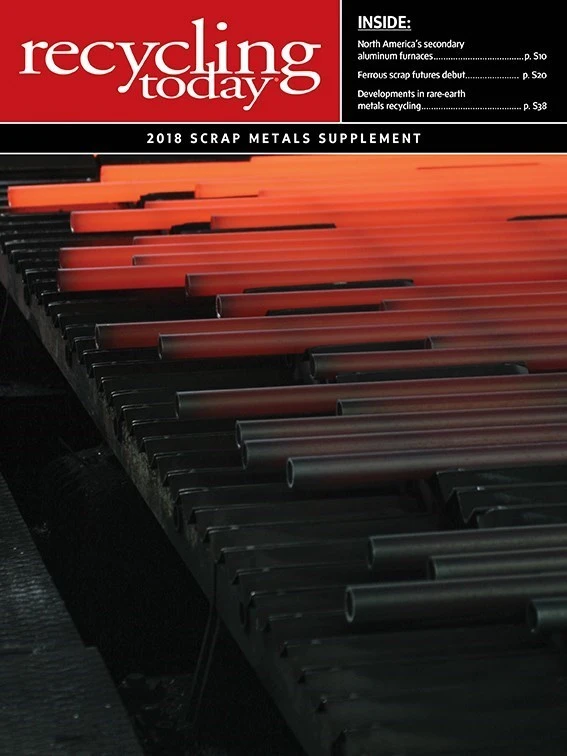
Recyclers and traders of copper and aluminum scrap have become thoroughly familiar with using COMEX and LME (London Metal Exchange) contracts to hedge or manage risks caused by volatile pricing.
The ferrous scrap sector has been far slower to embrace the idea, in previous decades seldom turning to any proposed contracts that might allow them to spread the forward risk caused by a rapidly dropping price. (Or by a rapidly rising price, in the case of mills, foundries and other buyers.)
The closing years of this decade could bring about a change in that nonferrous versus ferrous divide, with entities including the Nasdaq Futures Exchange (NFX) in New York and the LME offering contracts specifically designed to allow ferrous scrap sellers and buyers ways to reduce the risks caused by price volatility.
Finding the peg
Ferrous scrap is traded in several different grades and flows across international borders in considerable volumes. Thus, finding benchmark grades and destinations to serve as a peg for scrap contracts becomes one consideration.
Two different organizations, however, have identified what they see as the right fits for ferrous scrap trading contracts.
In November 2015, the LME introduced its Steel Scrap contract, which is based on a surveyed price calculated by S&P Global Platts. Specifically, Alberto Xodo, deputy head of ferrous at the LME, says the contract is tied to the Platts TSI (The Steel Index) price for 80 percent No. 1 heavy melting steel (HMS) and 20 percent No. 2 HMS bound for Turkey.
“[A futures contract] provides long product steelmakers and users with a good risk management tool, as their prices are directly impacted by the price of [ferrous scrap].” – John R. Conheeney, World Steel Exchange Marketing
“The steel market is a truly global market, and the Platts TSI index for HMS 1&2 80:20 CFR (cost and freight) Turkey is the global benchmark for steel scrap, making it relevant for all companies with exposure to scrap prices, regardless of their location,” Xodo says.
In December 2017, the NFX began trading its Midwest Shredded Steel Scrap AMM (American Metal Market) Index futures contract. John R. Conheeney, president of World Steel Exchange Marketing (WSEM), Englewood Cliffs, New Jersey, says, “WSEM is working with NFX to develop and promote ferrous futures products. U.S. shredded steel scrap is the first ferrous product of several we expect NFX to roll out.”
He adds, “The NFX
Scrap trader Nathan Fruchter of Idoru Trading Corp., Lawrence, New York, who has accepted an advisory role with the LME on its new contract, sees each of the new products as being of use to scrap generators, processors, sellers and buyers—wherever they may be. “These contracts are really for everyone, domestic or international; it doesn’t matter what country they’re in. It’s a form of protection for the scrap metal recycler, steel producer

Conheeney says the NFX contract “provides long product steelmakers and users with a good risk management tool, as their prices are directly impacted by the price of shredded. Also, demolition contractors can hedge the price of the steel they recover, and roadbuilders can know the price of their rebar before they bid on a job.”
On the global trading front, he adds, shredded ferrous scrap “is being shipped in containers to countries like India.”
Risky business
For as long as it has been traded, ferrous scrap pricing has risen and fallen based on supply and demand considerations that can change significantly from month to month.
Backers of the new ferrous contracts, however, say prices have risen and volatility has increased as the world economy has grown more interconnected, providing valid reasons to hedge risks.
As of mid-November 2017, more than 3.25 million metric tons of ferrous scrap have been traded on the LME contract since its launch.
“Hedging can provide a lot of benefits, which derive from gaining the ability to bring a higher level of certainty to a very uncertain and volatile trade,” Xodo says.
“Physical traders, recyclers and steel mills don’t want these big sudden market swings ruining a year’s worth of hard work and profits,” says Fruchter. “Nobody has [that much] appetite for risk. The marketplace today is not what it was 10 or 15 years ago. We have seen far more volatility in the ferrous scrap industry in recent years.”
Any time scrap processors hold ferrous inventory for more than 30 days, they are exposing themselves to risk, Conheeney says. “If they are holding unhedged inventory into the next month, then they are speculating. If they want to speculate, they may find that using the futures is an easier and cheaper way to be long the market, and the futures provide a way to get short that is not available to them now.”
Xodo offers his core business reason why the new contracts may be the best path forward for ferrous scrap recyclers and mill buyers alike who want to reduce their market exposure risk. “Risk is like matter,” he comments. “It can’t be created or destroyed, only transferred.”
Get curated news on YOUR industry.
Enter your email to receive our newsletters.

Explore the January 2018 Scrap Metals Supplement Issue
Check out more from this issue and find your next story to read.
Latest from Recycling Today
- Athens Services terminates contract with San Marino, California
- Partners develop specialty response vehicles for LIB fires
- Sonoco cites OCC shortage for price hike in Europe
- British Steel mill’s future up in the air
- Tomra applies GAINnext AI technology to upgrade wrought aluminum scrap
- Redwood Materials partners with Isuzu Commercial Truck
- The push for more supply
- ReMA PSI Chapter adds 7 members





